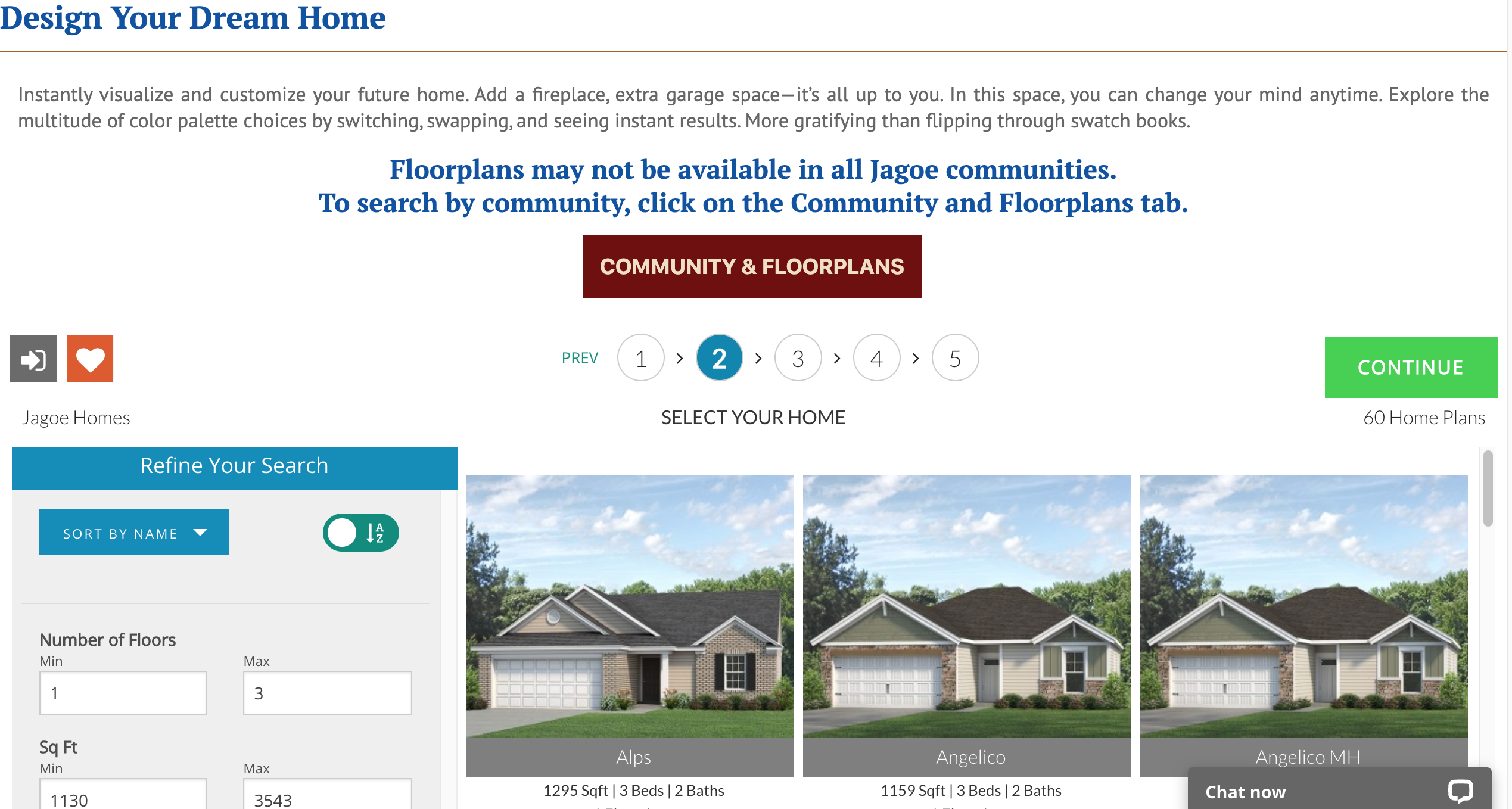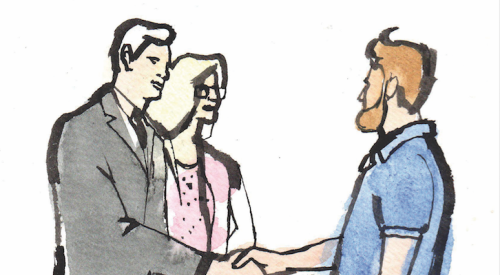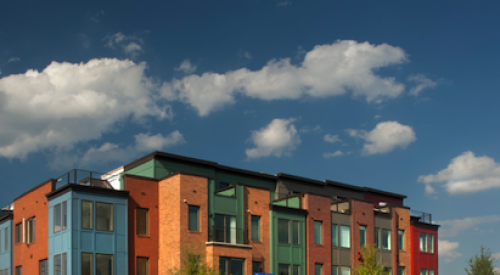As business cycles go, the current one is bizarre. Many builders reported that last December was unusually busy, the best in years for housing starts and contracts. As that momentum carried into January and February, 2020 was looking like it could be the most robust year yet of the recovery.
Then, poof! In a little more than a month, the coronavirus outbreak jolted the U.S. economy into its worst quarter since the Great Depression, with unprecedented declines in gross domestic product, employment, consumer confidence, retail spending, and just about every other metric.
Trying to Anticipate What the Downturn and Recovery Will Look Like
Though not officially a recession as of mid-May (we’ll have to wait for that declaration by the National Bureau of Economic Research), the downturn precipitated by COVID-19 is being compared with 9/11’s impact on the 2001 recession. The deep-V pattern of an economic decline that started with the dot.com bust during the first quarter of 2001 and exacerbated by the terrorist attacks in September, then followed by a quick turnaround in the fourth quarter, is the pattern builders and others are hoping for this time around. But there’s also uncertainty about how long it will take for society and the economy to truly move forward and recover from this public health crisis—will it be like the malaise from the Great Recession, which lingered longer than the officially designated period of December 2007 to June 2009?—and what that reality will look like.
Pro Builder asked home builders and industry consultants about what lessons they learned and strategies they used to survive the Great Recession and how those apply in the current situation. For sure, experiences from one downturn don’t necessarily carry over to the next slowdown, as the causes and conditions differ from one cycle to the next. Yet some tools and tactics are salient no matter the economic climate, such as controlling cash flow and getting out of deals that may no longer pencil out in the new conditions.
Lessons Learned From the Great Recession That Apply Now
1] Mind Your Cash
“The overarching advice is to do the stuff you should be doing every day,” says Dave Erickson of American Southern Homes, in McLean, Va., namely, are you running a good business? Is it profitable? Can you walk into your accountant’s office and get answers quickly about your current cash flow, where your money is going, and projections for this month and next month? “If you can’t do that, you’re going to be one of the first people whacked,” he says.
Erickson, who founded Grayhawk Homes in 1992, grew it into the largest volume builder in Columbus, Ga., expanded into markets in Iowa, Alabama, and South Carolina, and became a shareholder of American Southern Homes after it acquired Grayhawk Homes in November 2019.
“If you’re guessing where your money is, or you’re hoping closings will happen, and you lose a percentage of sales you were hoping to get, all of a sudden you’re behind the curve,” he adds. “It may push you off the edge.”
Jeff Benach, co-principal at Lexington Homes, in Chicago, says his team regularly examines financial scenarios to forecast what the numbers could look like if sales declined by 10%, 20%, and so on.
There have been four “official” recessions since 1980, and Jeff Benach, co-principal at Lexington Homes, in Chicago, has endured them all. His team regularly examines financial scenarios to forecast what the numbers could look like should sales decline by 10%, 20%, and so on. Should future sales decline even further, Benach says he will conserve cash by pushing back construction starts. “I’m not somebody who is flush with cash,” he says. “I’m a developer. I have to take out loans. We have to guarantee them. I’m not being Mr. Positive. I’m just saying I’m not freaking out to where I see things going to hell in a handbasket.”
But, longer term, Benach expects the economy to bounce back. Unlike the previous global recession caused by loose credit, inflated appraisals, and subprime mortgages to unqualified buyers, the fundamentals for housing since have been solid, as banks tightened lending practices and builders collectively seemed less extended.
Benach also has a willingness to adjust, even when times are good. In the last quarter of 2019, he looked at his spec home inventory and decided he needed to move some units. He adjusted the pricing, sold those properties, and eliminated their carrying costs.
Also, since about mid-2018, Benach was seeing new traffic from Millennials and Gen-X renters looking to buy—a dynamic that’s unlikely to abate after the pause.
2] Lead the Market / Save the Contract
Home prices don’t always tumble during recessions, and an April report from Fannie Mae projected the national median selling price to increase from $272,000 to $275,000 this year. But home sales are now forecast to decline 15%, and if product doesn’t sell, deciding whether to hold on price or to discount is a balancing act for builders between being too hasty and being denied an opportunity to realize a margin or being late and getting saddled with too much risk.
“If you have many homes in inventory, don’t wait until your competitors drop their prices, making your products uncompetitive. Beat them to the punch and lead the market down, however painful,” says Mark Hodges, a strategic planning and quality management consultant at Blueprint Strategic Consulting, in Haddonfield, N.J. “If you follow the market down, you give up margin without getting sales velocity. When you lead the market down, you’re still giving up margin, but at least you’re getting velocity by attracting the buyers that are still in the market.”
As for converting prospects who are wary of buying in a difficult market, you can “take them out of the market” without having to convince them to sign a contract. In 2008, when Hodges was working through the housing crisis in Florida for builder K. Hovnanian Homes, he offered buyers the opportunity to reserve their desired home site for 30 days or more (the length of time could be negotiated or determined by the builder) with a small refundable deposit. He included a right of first refusal so that if another prospective buyer wanted to buy that lot, the first client had 72 hours to make up their mind to sign a contract or let it go. Hodges’ approach proved critical to selling nearly 300 finished homes in about 18 months.
When consultant Mark Hodges was working with K. Hovnanian in Florida during the previous housing crisis, he offered buyers the opportunity to reserve their desired home site for 30 days or more, with a small refundable deposit.
“The ‘two-step’ process worked because we were sending clients home on a Sunday evening with an emotional commitment to our neighborhood [having chosen a specific home with a financial stake],” Hodges says. Instead of sitting at the kitchen table with five brochures from five other communities they’d visited, they just had the one from K. Hovnanian. “That was the first step toward an emotional commitment to ultimately make the purchase decision,” he says.
But what if you have a buyer already under contract who is demanding to renegotiate price because their stock portfolio took a hit or they’re worried about losing their job, and they’re threatening to walk away from the project? Hodges advises builders to offer to suspend construction for a defined period, secure the house, and wait until the dust settles.
“Suspending construction temporarily will help your cash flow and will ease the pressure on your buyers to close escrow in frightening times,” he says. “Tell them, ‘We’ll hang in there with you and won’t force you to go to closing now, then we’ll figure out when we can begin construction again, so we can get you into your home.’ Most customers will say, ‘OK, I’m scared, but if you’re going to work with me, I’ll hang in there.’ Your chances of getting them to closing increase as market conditions improve.”
3] Sharpen the Message
John Allen was a land developer with 60 vacant lots when the Great Recession hit. Local builders couldn’t buy his land, so he became a builder himself to put houses on them. Since then, the president of Brown Haven Homes, in Blairsville, Ga., has repositioned his business to be an on-your-lot builder constructing only presold homes funded with construction loans in his buyers’ names.
“I just became more averse to that [spec homes and lots] type of debt, so rather than carry land debt on the balance sheet, I worked on growing more locations and investing more in the company and in people,” Allen says. If the market did roll over, he might have to lay people off, but would not be stuck with land debt. “Balance sheets are what make you go bankrupt,” he says. “P&Ls, you can manage.”

This time Allen had been working with Group Two Advertising, a new-home marketing agency in Philadelphia. As the first shelter-in-place orders rolled out, Brown Haven launched its “Peace of Mind Is Priceless” campaign (see above). Allen also increased his marketing spend by 50%, pushing out more Google ads, social media, and posts on Facebook and Instagram. Among those posts are videos of new-home specialists and general managers walking sunny jobsites in one of Brown Haven’s five communities in the North Georgia mountains or by a bucolic lake in the Carolinas. “We could be breaking ground here on your new home in 90 days,” the ads say. “Peace is priceless.” As of early April, Brown Haven had a six-week backlog and not a single buyer had backed out of their start date.
“We’re psychologists more than anything else,” Allen says. “We have our lenders speak with buyers, and our home specialists have almost a daily conversation with buyers, just to make sure they’re comfortable.” Buyers are coming from the Northeast and Florida to the small towns he builds in, and Allen is telling them they’re buying peace of mind. “That is what they’re buying in the form of a home,” he says.
4] Be Nimble, Virtually
Nimbleness is another survival strategy. One unusual characteristic of the COVID-19–led downturn is that its cataclysmic impact occurred in less than a month. Rather than seeing the possibility of a downturn coming from afar and preparing for it, builders had a handful of days to react after schools and businesses were ordered to shut down.
Scott Jagoe, co-owner of Jagoe Homes, in Owensboro, Ky., anticipated that buyers would be uncomfortable attending in-person product selection meetings. So he gathered renderings, floor plans, and images from the company’s Pinterest page and by the first week of April had launched a digital design center customers could use to make selections without physically visiting the showroom.

“We’re able to have one-on-one meetings with social distancing at our actual design centers,” he says, “but if the customer doesn’t feel comfortable doing that, they can now go virtual.” In fact, he advocates a tag-team approach: doing some homework on the virtual platform before meeting with a designer in person, “and just once or twice instead of several times,” he adds.
The virtual design center supplements other longtime digital features on Jagoe’s website, including Matterport 3D virtual and video home tours of its products (which are getting more views during the coronavirus outbreak) and access to online sales counselors.
“I don’t know if [being nimble] will ever change when we get back to normal,” Jagoe says. “You never come out of a recession with normalcy. There are always disrupters, and I think digital tool use will be one of them.”
5] Use Downtime to Think Big
Another piece of advice is to use any downtime to improve company processes and to experiment. For example, during the Great Recession, Randal Jackson, president and principal of PlaceWorks, in Santa Ana, Calif., assembled a team of architects, a developer, and a marketing expert to envision the future of his company. “We put together theoretical projects, one of which won a Gold Nugget award mid-recession,” he recalls. The exercise redesigned six of the firm’s conventional projects to include smaller ancillary units attached to them, which the team submitted to the design awards program. “We called them bounce-back units, mother-in-law, or retired parent’s units back then,” Jackson says, before the term ADU (accessory dwelling unit) took hold more recently.
He’s been preaching the utility of ADUs since then. Now, with California recently enacting a law allowing ADUs on single-family home lots, and the pandemic awakening people to the need for bringing generations of family closer, yet safely, together, Jackson says PlaceWorks will repackage the concept after this downturn as a multigenerational housing solution that takes advantage of found space or offers a way to have a second kitchen or home office at lower cost.
6] Consider Entry-Level Homes
The mid-business cycle pattern typically has been one in which builders compete by offering more features and benefits, incrementally pushing up their home prices as they try to outdo one another. After a market collapse wipes the slate somewhat clean, builders have usually come out of recessions by simplifying their designs to reduce construction costs and perhaps lower the price tag.
The last recovery was driven mainly by move-up buyers purchasing homes on a price tier higher than entry-level homes. Can the new-construction market climb back to an annualized rate of 1.6 million starts as it had in January 2020 and stay above that level without the first-time buyer as a major force? Unless high-end home builders are selling to wealthy buyers with no contingencies, the housing market is arguably fueled by entry-level homebuyers who enable sellers upstream to unload their current properties in order to move up to larger and/or more expensive homes.
“There is an opportunity for builders to simplify again, as we typically do coming out of a recession,” says Don Neff, a former builder and president of LJP Construction Services, a quality-assurance and risk-mitigation consultancy in Irvine, Calif. Drive costs out, bring prices down to capture the more affordable price range, he says, or people won’t be able to get on the first rung of the home equity ladder.
“Economic slowdowns like this are opportunities to reflect, reassess, and retool our procedures,” Neff says. “It’s like being on holiday for months because everything is going so slowly.” It’s a good time to rethink and streamline processes, iron out inconsistencies, make sure budgets are tight and strong, and that there are sufficient reserves going forward. “Better to have a simple lifestyle with a big bank account of reserves than to drive fancy cars and live in a house you can barely afford,” he says.
Access a PDF of this article in Pro Builder's May/June 2020 digital edition













